A Rice Ancestral Genetic Resource Conferring Ideal Plant Shapes for Vegetative Growth and Weed Suppression
- PMID: 34899776
- PMCID: PMC8664436
- DOI: 10.3389/fpls.2021.748531
A Rice Ancestral Genetic Resource Conferring Ideal Plant Shapes for Vegetative Growth and Weed Suppression
Abstract
To maximize crop growth, crops need to capture sunlight efficiently. This property is primarily influenced by the shape of the crops such as the angle, area, and arrangement of leaves. We constructed a rice (Oryza sativa L.) inbred line that displayed an ideal transition of plant shapes in terms of sunlight receiving efficiency. During vegetative growth, this line exhibited tiller spreading with increased tiller number, which formed a parabolic antenna-like structure. The architecture probably improved light reception efficiency of individuals compared with the recurrent parent. The line achieved not only acceleration of the vegetative growth, but also significant suppression of weed growth under the canopy. The increased light reception efficiency of the line has consequently reduced the amount of incident light to the ground and supplied significant competitiveness against weeds. The spread tillers became erect from the entry of the reproductive growth phase, adaptively sustaining light reception efficiency in thicker stands. The line carries a small chromosomal segment from Oryza rufipogon Griff., a putative progenitor of Asian cultivated rice. The introduced chromosome segment had little effect on grain yield and quality. Our results shed light on potentials hidden in the wild rice chromosome segment to achieve the valuable traits.
Keywords: Asian cultivated rice (Oryza sativa L); ancestral genetic resource; light reception efficiency; plant shape; tiller angle; vegetative growth; weed control; wild rice (Oryza rufipogon Griff.).
Copyright © 2021 Inagaki, Asami, Hirabayashi, Uchino, Imaizumi and Ishimaru.
Conflict of interest statement
The authors declare that the research was conducted in the absence of any commercial or financial relationships that could be construed as a potential conflict of interest.
Figures

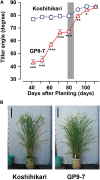
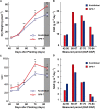
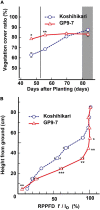


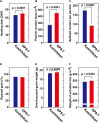
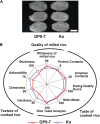
References
-
- Chauhan B. S. (2020). Grand challenges in weed management. Front. Agron. 1:3. 10.3389/fagro.2019.00003 - DOI
-
- Dass A., Shekhawat K., Choudhary A. K., Sepat S., Rathore S. S., Mahajan G., et al. (2017). Weed management in rice using crop competition-a review. Crop Prot. 95 45–52. 10.1016/j.cropro.2016.08.005 - DOI
LinkOut - more resources
Full Text Sources

